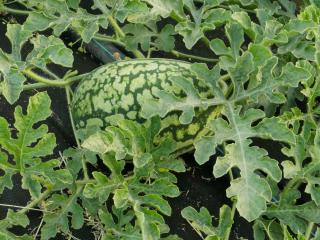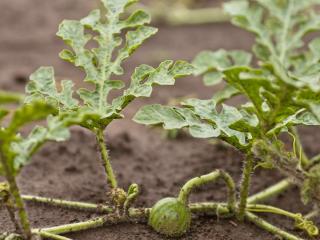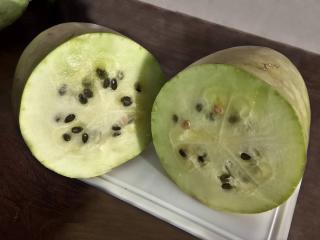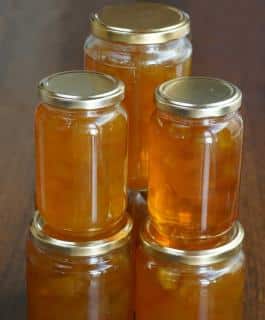

Citron melon, or “jam melon“, is related to watermelon.
Key Citron melon facts
Name: Citrullus lanatus var. citroides
Common: citre, fodder melon, tsamma, red seed melon
Synonyms: Citrullus caffer, C. amarus
Family: Cucurbitaceae
Type – vegetable/fruit vine
Planting distance – 3 feet/1 m apart
Exposure – full sun
Soil: rich, deep, well-drained – Bloom: summer – Harvest: late summer, fall
Keen growers know that citron melon is a valuable heirloom fruit. Indeed, the neutral taste helps other, more delicate, fruits go a long way when making jams and jellies.

In tropical climates or places with mild winters, the same plant may keep growing and fruiting throughout the seasons for several years.

Make sure soil is very rich and deep.
Sprout seeds in spring indoors, transfer outdoors after the last frosts. Space plants by at least 3 feet, ideally 6 feet (1 to 2 meters). They grow very large!
Most of the roots are concentrated in the top 18 inches of soil though, or 45 cm.
→ Prepare soil to a depth of at least one foot. This is important.
Plentiful water and lots of sun will lead to huge fruits. Pinching fruits so that only 3 remain will ensure each one grows very large.
There are two groups of citron melons.
Some varieties have reddish seeds, hence the common name in those areas: red-seeded melon.
Apart from the high pectin content ideal for jam, citron melon also has lycopene. Lycopene is an anti-oxidant.

Seeds are either green or red seed. They’re spread out throughout the flesh.

Citron melon can keep for months if in a cool, dry and well-ventilated pantry.
This is an excellent fruit to extend flavors of berries and other fruits when preparing jam, since its taste is neutral.